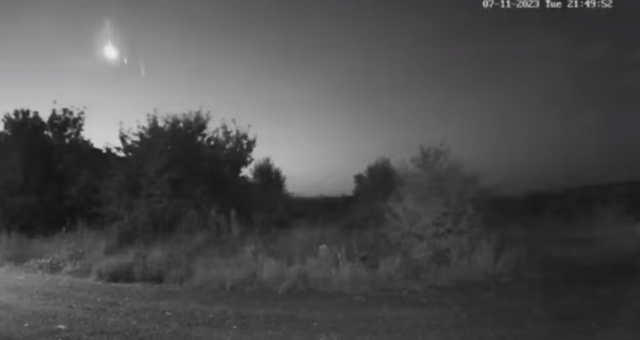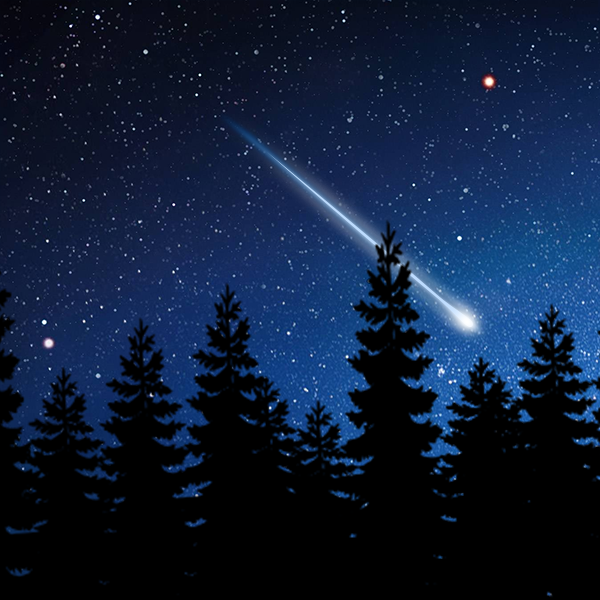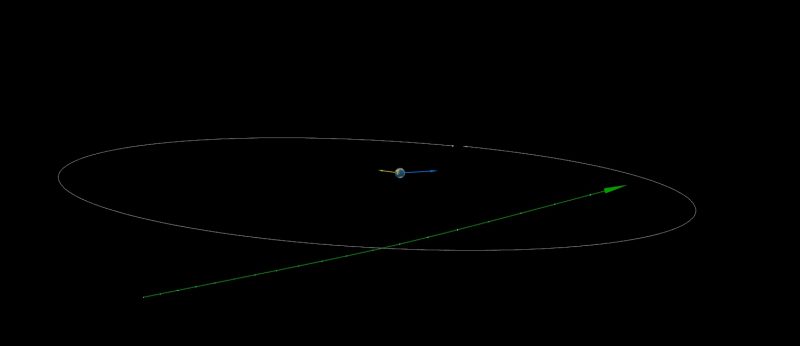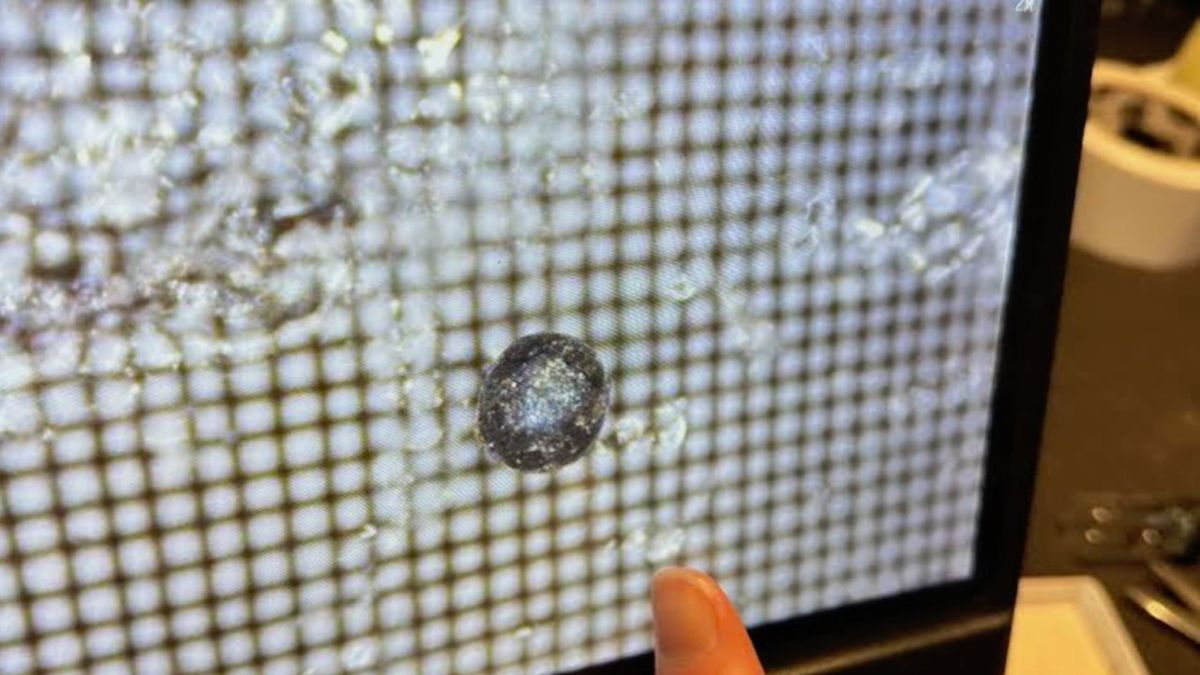Two views of the recent fireball in Bulgaria!

Did a Meteorite Hit Bulgaria Last Night? (VIDEO) - Novinite.com - Sofia News Agency
A bright light falling in the sky was noticed by hundreds of people in Sofia, Vidin, Lom, Ikhtiman, Plovdiv and other cities and villages in the country minutes before 10 p.m.
www.novinite.com
A bright light falling in the sky was noticed by hundreds of people in Sofia, Vidin, Lom, Ikhtiman, Plovdiv and other cities and villages in the country minutes before 10 p.m. last night. Users on social networks also published footage from security cameras showing a ball of bright light, which is supposed to be a meteorite.
"So far we have information that it is a fallen meteorite that has been seen in almost every city in the country. People are reporting a bright light in the sky, turning night into day, which ended with a violent rumble. Where exactly the meteorite fell still we don't know yet," Meteo Balkans reported.
bTV reports that at this stage the Bulgarian Academy of Science (BAS) and the observatory in Rozhen do not confirm the information, there is no official information from the National Institute of Meteorology and Hydrology either. According to information from BNT, teams of the Regional Directorate of the Ministry of Internal Affairs - Vidin, conducted an inspection after reports of a strong explosion, there are no reports of casualties or material damage. According to the Romanian authorities, it was a meteorite that exploded in the air.
"Between 25,000 and 30,000 meteorites fall to earth every year. Their total average weight reaches 10 tons. Between 6 and 12 meteorites per year are the size of a washing machine," commented Nikola Petrov from the observatory in Rozhen.
Footage of the phenomenon was captured and distributed on social networks by Alexander Zahariev.
Scientist about the fallen meteorite: Bolide, explodes in the atmosphere, does not reach the Earth
"The phenomenon we observed last night was the fall of a very bright meteorite called a bolide. These bodies explode in the atmosphere before they touch the Earth", explained on Nova TV, Pencho Markishki, a physicist at the Institute of Astronomy of the BAS.
At 10 p.m. on Tuesday, a loud rumble was heard on the territory of the Vidin region and a bright light was seen falling. The phenomenon was also observed in Sofia, Lom, on the Black Sea. The Romanian authorities reported that it was a meteorite that exploded in the air.
At the end of July, two meteor showers are best observed - the Southern Delta-Aquariids and Alpha-Capricornids. The body itself came from the south-southwest. This is an explosion in the atmosphere, several tens of kilometers from Earth. The chance of debris reaching Earth is not high, the scientist said.
According to him, this phenomenon repeats in a smaller version the Chelyabinsk meteorite explosion of February 2013.
"This is a protective function of our atmosphere. All meteor bodies that enter the earth's atmosphere obliquely are heated until they explode and this explosion occurs at a height of several tens of kilometers. In this way, the atmosphere protects us from such phenomena", Markishki said.
The scientist explained that it is not possible to specify the exact size of the meteorite, which can be from a few centimeters to a meter.
The body entered the Earth's atmosphere at a low speed because it reached the Earth on the orbital path, which is the reason for this slow motion. People have watched it for 3-4 seconds, some even 5 seconds. Most meteorites end up in the Earth's atmosphere and burn up completely, but large pieces of rock, or pieces containing metals, can explode lower and debris can reach Earth. There have been bigger cases, such as the Tunguska meteorite of 1908, whose sound wave traveled around the world several times and caused a very serious explosion, but luckily for us such phenomena are rare, the physicist said.
"Meteor showers are very easy to predict because they occur at the same time of the year. The maximum of the Perseid meteor shower is around August 12-13, but we cannot predict how large bodies will enter the atmosphere, especially when it comes to sporadic meteors like the one we are talking about right now. They are unpredictable. If the body is several meters in size, a large laboratory can detect it. But such cases are rare. When it comes to bodies below 10 meters or 1-2 meters, their movement is impossible to predict", the BAS scientist explained.
The Ministry of the Interior on the fallen meteorite: It is a natural phenomenon, the experts will say
"Regarding the loud rumbling - it is not an accident, but a natural phenomenon, the experts will say. There is no tension on the territory of the Vidin region, everything is calm. Already last night, all available forces of the regional directorate were directed to go around the region - to search for people who were injured. There were no fires or material damage," Senior Commissioner Petar Kotsin, director of the Regional Directorate of the Ministry of Internal Affairs in Vidin, said at a briefing.
According to him, there was a single report from the village of Gomotartsi that a loud rumble was heard near an outbuilding.
"There is also information from colleagues in Romania that it is a natural phenomenon," added Senior Commissioner Petar Kotsin.

American Meteor Society
We received 13 reports about a fireball seen over Brașov, București, Greater Skopje, Județul Cluj, Județul Dâmbovița, Județul Mureș, Sofia City Province and Vraca on Tuesday, July 11th 2023 around 18:39 UT.



 The concern of the coming day is
The concern of the coming day is